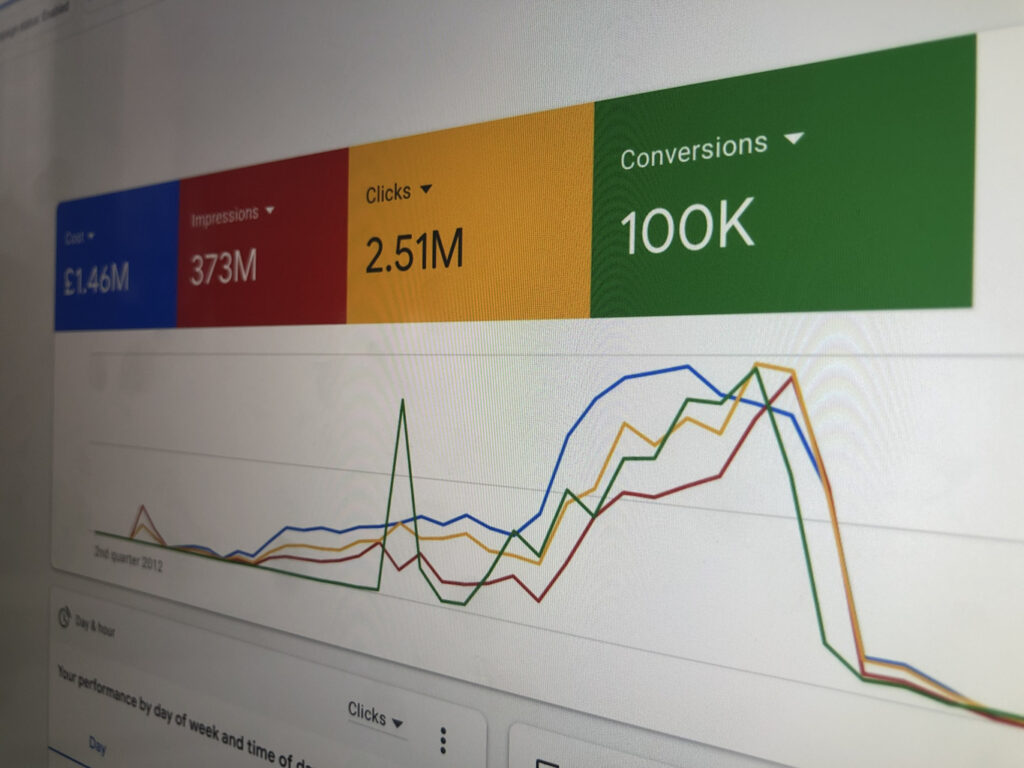Proving ROI from B2B paid media campaigns is difficult, but a necessary task for marketers today. You launch campaigns, monitor results in-platform, and present numbers to stakeholders. But inevitably, the question comes:
“Why doesn’t this match what we’re seeing in the CRM?” and “How much money has this actually made us?”
If you’ve been there, you’re not alone. Ad platform metrics rarely match first-party sales data. And that’s okay, especially in B2B, where the path to revenue is rarely direct, often slow, and influenced by multiple touchpoints.
So how do you prove ROI? You change how you look at the data.
The Dilemma:
One of the biggest challenges B2B marketers face when trying to prove ROI is the disconnect between ad platform metrics and actual business outcomes. You might see a strong return on ad spend or a great CPA reported in Google Ads or LinkedIn, but when you check your CRM, the revenue tells a different story or worse, nothing seems to match up at all.
This happens for a few key reasons:
- Data-driven attribution models assign credit across multiple touchpoints, often inflating performance in-platform.
- CRM data has delays, qualification layers, and human variability that make it harder to match 1:1 with media metrics.
- B2B journeys are complex; they often involve multiple stakeholders, long decision cycles, and several handoffs between marketing and sales.
So even though a paid media channel might not directly “close the deal,” it could be the first interaction, a key influence point, or the trigger that moves a prospect to the next stage.
And that’s the point:
Proving ROI in B2B paid media isn’t about finding a single, magic number. It’s about understanding influence over time and connecting the dots between marketing activity and sales impact.
Attribution models will never be perfect. But by focusing on the bigger picture and aligning marketing metrics with sales outcomes, you can tell a far more meaningful (and accurate) story of ROI.
How to Actually Prove ROI (Without Relying on Just the Ad Platforms)
To prove real ROI in B2B, you need to look beyond the platform and align your reporting with the entire buyer journey from awareness to closed-won.
Here’s how to do that effectively:
1. Track Business-Level Growth Trends
One of the most overlooked methods of proving ROI is simply zooming out.
Look at what’s happening in the business over time. For example:
- Did demo requests increase the week your new Google demand gen campaign launched?
- Did pipeline velocity improve after new creative or messaging went live on LinkedIn?
- Are new regions or personas entering the funnel after a geo-targeted campaign?
Of course, correlation doesn’t always equal causation, but contextual timing matters, and it helps build the narrative of marketing contribution.
2. Use CRM Data to Track Funnel Progression
Instead of focusing only on top-of-funnel metrics like cost-per-click or in-platform conversions, map your paid media results across the full sales funnel:
- Cost per MQL
- Cost per SQL
- Cost per demo
- Cost per proposal
- Cost per closed-won deal
This doesn’t just show performance; it will reveal friction points. For example:
- Low cost per demo completed, but this isn’t translating to the next phase of the sales funnel? Maybe the demo isn’t delivering value.
- High MQLs but few SQLs? Lead quality might be off, so it’s time to revisit targeting or messaging and talk to the sales team.
This type of insight is gold for both marketing and sales alignment.
3. Blend Ad and CRM Data in Looker Studio to Tell a Clear Story
One of the most effective ways we’ve helped clients prove ROI is by blending data sources in Looker Studio.
Here’s how it works:
- Connect your Google Ads or LinkedIn Ads data (for example) with your CRM (like Salesforce or HubSpot).
- Create a unified dashboard that shows ad performance alongside sales metrics.
- Visualise the cost per funnel stage, and most importantly, the pipeline and revenue influenced by paid media.
For example:
“By combining Google Ads with Salesforce data in Looker Studio, we were able to show that although in-platform ROAS was unclear, the campaign had generated 38 qualified leads at £450 each with over £350K in active pipeline attributed to those contacts.”
This kind of view makes it easy for leadership to see the bigger picture and understand how paid media is contributing to business growth, even if it’s not directly closing the deal…yet
4. Use Funnel Learnings to Improve Strategy, Messaging, and Platform Optimisation
One of the best byproducts of this full-funnel approach is that it doesn’t just help prove ROI it helps improve it.
By tracking performance through every stage of the sales process, you gain insights that go far beyond reporting:
- Is your messaging attracting the right leads?
- Are prospects dropping off at a particular stage like the demo?
- Which campaigns are bringing in higher-value opportunities or decision-makers?
These learnings don’t just guide creative and strategy; they also provide critical signals to feed back into your paid media platforms, for example, Google Ads.
In the age of automation and AI-driven bidding, you’re not just running ads; you’re training the algorithm. By building audiences based on qualified leads, sales stages, or engaged users, you help Google understand:
“These are the types of people we want more of.”
This signal-based approach influences:
- Targeting: who the algorithm reaches
- Optimisation goals: which behaviours it prioritise
- Budget efficiency: where money is being wasted vs. where it can scale
For example, retargeting demo attendees or building audiences based on users who’ve reached a late-stage form can reinforce the platform’s ability to drive more of those high-quality actions.
Final Thoughts
Proving ROI in B2B paid media isn’t about finding a perfect match between Google Ads and Salesforce. It’s about:
- Looking at real business outcomes,
- Mapping influence across the funnel,
- And communicating impact through integrated, contextual reporting.
Yes, the numbers won’t always align. But with the right reporting approach and a shift in mindset, you can prove that your media efforts are moving the needle where it matters most.
Need help building a blended data view for your campaigns and proving Paid Media ROI? Let’s chat and see how we can help.




